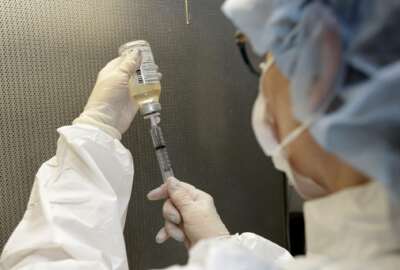
Research: A lesser-seen side of government-funded health care
But even if the ACA disappeared, the government would still have a giant footprint in health and disease research. The National Institutes of Health's annual bu...
 The Affordable Care Act sparked, or at least supercharged, the debate about the role of government in health care. But even if the ACA disappeared, the government would still have a giant footprint in health and disease research.
The Affordable Care Act sparked, or at least supercharged, the debate about the role of government in health care. But even if the ACA disappeared, the government would still have a giant footprint in health and disease research.
Consider the figure of $35 billion. That’s about the size of the National Institutes of Health’s annual budget. It’s within a few billion of the State Department and six times what the EPA wants for 2019.
Coincidentally, $35 billion is also what the Centers for Medicare and Medicaid Services pays out for kidney dialysis each year, according to Sandeep Patel, the director of KidneyX, a partnership between the Department of Health and Human Services and the American Society of Nephrology. KidneyX has a simple goal: To bring kidney disease treatment into the 21st century.
The story should make everyone think rationally about the role of government in health care. My Federal Drive with Tom Temin has featured two medically-related stories in the past week.
KidneyX is first taking on blood dialysis, a technique for maintaining live of those with kidney failure. The first successful dialysis occurred in the 1940s and it became commonplace the following decade. But the experience of patients in 2018 is nearly identical to that of patients 60 years ago. It’s preferable to death, but an unpleasant to live. And an expensive one.
Medical procedures, from root canals to knee replacement, are radically better than even a few years ago. But not dialysis. As they did in the 1950s, patients spend several hours three or four times a week hooked up to big, whirring machines.
Patel wants to see dialysis modernized. Many promising technologies exist, including implantable devices. KidneyX is using challenge prizes to come up with promising solutions. KidneyX is looking for non-traditional thinkers. Patel said one motivation for HHS to launch KidneyX is that $35 billion tab.
The Obama administration boosted the use of challenge grants in a variety of domains. I was glad to see this useful strategy continued in the Trump administration.
Agencies also continue to tackle enduring health problems in traditional ways. Looking out my studio window, I see parents on the sidewalks with youngsters in tow. I guess school is out for the summer. I wonder if their schools impose strict peanut bans, because it seems like every other child today is in danger of anaphylactic shock from any peanut in the same zip code.
It’s become a distressing and growing problem. It’s also one that Agriculture Department scientist Soheila Maleki has studied for 20 years. A Service to America Medals finalist, she was inspired by a college friend with nut allergies. Maleki’s enthusiasm is infectious. Her work at the Agricultural Research Services has lead to revised ways of testing for food allergies.
It’s prompted food manufacturers to change how they process peanuts, and to the potential development of low-allergenic nuts. Her work, like that of KidneyX, also has a tie to the private sector. She is advising a company called Aimmune Therapeutics, which develops remedies for food allergies.
Maleki also has worked with other scientists such as Gideon Lack of Kings College, who discovered a peanut laced Bamba snack that’s popular in Israel appears to prevent the emergence of peanut allergies thanks to early-in-life exposure.
My own grandchildren were scarfing down these treats as soon as they could grasp them. Maybe it’s time to move Bamba from the international to the baby food aisle.
Copyright © 2024 Federal News Network. All rights reserved. This website is not intended for users located within the European Economic Area.
Tom Temin is host of the Federal Drive and has been providing insight on federal technology and management issues for more than 30 years.
Follow @tteminWFED






